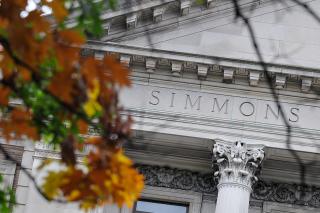This award recognizes ten faculty members who reflected on “silver linings” from the past year of teaching online.
The English proverb “necessity is the mother of invention” was never more true than last year, when faculty pivoted to offer courses online in the midst of a pandemic. To recognize the achievements that sprang from that work, Simmons University received a $10,000 Presidential Grant through the Davis Education Foundation to fund a Post-Pandemic Innovative Teaching Award.
This award recognizes ten faculty members who reflected on “silver linings” from the past year of teaching online during the pandemic and plan to carry forward an approach, technique, or tool to improve student learning, engagement, or retention for on-ground fall 2021 courses. The winners were selected by the Center for Faculty Excellence Advisory Committee.
Joanna Almeida, Associate Professor of Social Work

"In between moments of panic, the fortuity of teaching a course on health in the midst of the largest public health crisis in a century hit me,” says Associate Professor Joanna Almeida. “The catastrophe of the epidemic was an opportunity for me to bring abstract concepts to life.”
Almeida developed a midterm assignment: a social autopsy of COVID-19 inequity, in which students used real-time data to understand the factors that led to the disproportionate burden of COVID-19 on marginalized populations.
"The aim was for students to understand the deeply-rooted inequitable distribution of health-promoting resources and health-damaging exposures across social groups, which have existed for decades, but laid bare by the pandemic,” says Almeida. “When students connect course material to current and relevant events in their lives, they engage, master, and retain the knowledge. More broadly, the past year has taught me that teaching challenges should not be avoided; they are opportunities for innovation and growth, which can enhance students’ experience and create more impactful learning.”
Tatiana Cruz, Assistant Professor and Interdisciplinary Program Director of Africana Studies
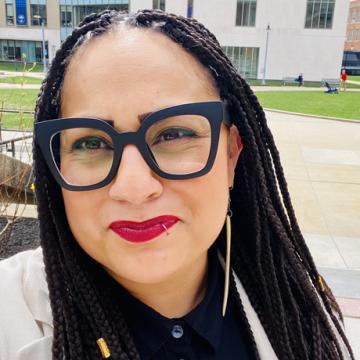
Other faculty members focused on fostering connections with students online.
“I realize that at the core of excellent teaching is empathy and relationship-building, more than content delivered,” says Assistant Professor Tatiana Cruz.
Inspired by an Edutopia article, Cruz created a daily class ritual, the Class Culture Facilitator.
“Students tackled the assignment with enthusiasm,” says Cruz. “They openly shared a piece of themselves, presenting powerful intentions that inspired others or dedicating classes to their loved ones or mentors. Together, we shared real moments and grew closer as a community. We had difficult, productive conservations that students facilitated with care and respect. We listened to great music that the students selected, danced with joy, and collectively shared a sense of closure and uplift at the end of each class.”
This semester, Cruz has adapted the ritual for her in-person classes.
Lydia Fash, Assistant Professor of English
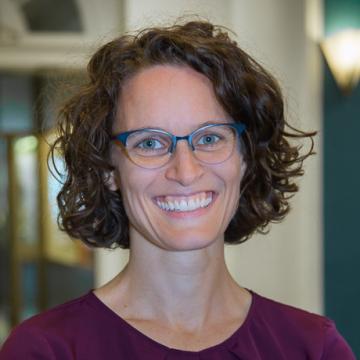
Many faculty embraced new technologies in an effort to keep students engaged. Assistant Professor Lydia Fash used short pre-recorded lectures to direct student homework readings.
“If the benefits of allowing students to view and re-view and take better notes weren’t enough, these recorded lectures directed student reading in a way that I have never been able to before,” says Fash. “The recorded lectures thus helped them understand critical concepts, direct their homework reading, and make our conversations deeper and classwork more productive.”
Lisa Hussey, Associate Professor of Library and Information Science

Associate Professor Lisa Hussey implemented a flipped-classroom approach.
“I used asynchronous tools to deliver content and synchronous sessions for activities and discussion,” says Hussey. “I also used synchronous meetings, both within and outside of the course, to create social spaces for students to engage on a personal level, build networks, and feel connected to Simmons on a deeper level.”
Shirong Luo, Associate Professor and Interdisciplinary Program Director of Philosophy

Associate Professor Shirong Luo developed student-led “discussion leadership” — a co-teaching approach in which students were partners in teaching and learning with the instructor via text-based questioning and debating to make learning more dynamic, interactive, and engaging.
"My approach to online teaching may be summarized as consisting of four interlinked commitments,” says Luo, “teaching inclusively, giving students opportunities to hone their leadership skills, keeping their academic curiosity alive, and training them to be active and independent learners.”
Eric Luth, Assistant Professor of Biology
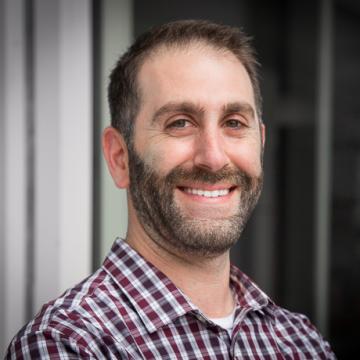
Similarly, Assistant Professor Eric Luth redesigned a lab for online learning.
“The switch to online courses forced me to reprioritize the learning objectives for my biology lab class and gave me a chance to think about what we should be doing in labs and why,” says Luth. “I used this as an opportunity to focus on reflection and communication, skills that are often overlooked but just as important to science as experimentation.”
Briana Martino, Assistant Professor of Communications
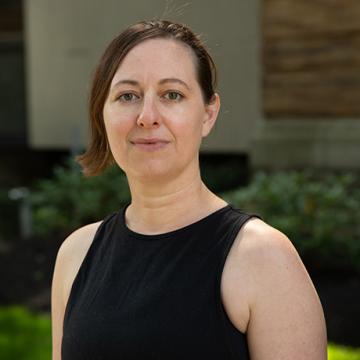
Finding joy and well-being in 2020 was that much more difficult for marginalized populations.
“LGBTQ students face a unique set of vulnerabilities in a remote learning environment beyond the many regularly navigated by our students at large,” says Briana Martino, Assistant Professor of Communications. “In planning a class on LGBTQ Studies, I was keenly aware that mere participation in class discussion or possession of required course material could put students in unwelcoming homes at increased risk of violence, housing insecurity, food insecurity, and more. How would I mitigate that risk?”
Martino drew on research in trauma-informed course design and invested the class in histories, cultures, and practices of queer survival and joy. “I worked with community leaders to engage students in local mutual projects, widening their safety nets if needed. This encouraged students to locate themselves as agents in a long lineage of LGBTQ care communities, to develop accountability among each other, and provided tools for direct action and mutual aid.”
Aaron Rosenthal, Assistant Professor of Political Science & International Relations
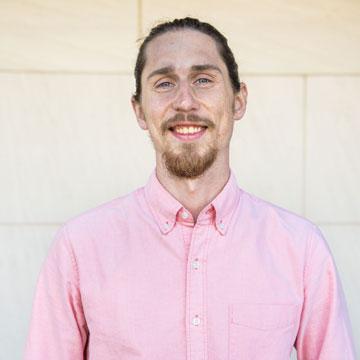
By offering recorded introductory and closing lectures, Assistant Professor Aaron Rosenthal opened up 15 minutes of synchronous class time.
“I asked everyone to say something that had brought them joy in the last week,” recalls Rosenthal. “As students began sharing books, shows, movies, and recipes, I was struck by the palpable shift in our Zoom room’s energy. People were smiling as they listened, calling out that they were also listening to that album or had baked the same bread recipe. From that point on, I worked to center joy at the beginning of every class and created joy forums on our course sites to keep the conversations going between classes.”
Kate Walker, Assistant Professor of Practice of Nutrition
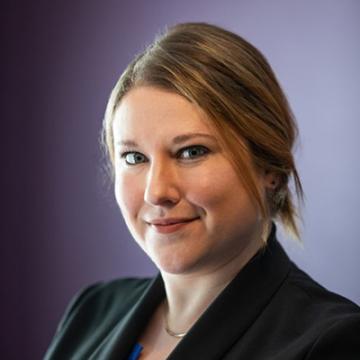
Assistant Professor of Practice Kate Walker created a Virtual Hospital: a high-quality, challenging simulation facilitated over Zoom that ran daily with patient actors.
“There was no time to overthink or feel self-conscious!” says Walker. “I felt a sort of mental freedom, as a novice professor, to just try anything that might create a meaningful learning experience. The interns were so happy for the forward-motion, and their positivity kept me motivated.”
Department of Art and Music Professors

The limitations of online teaching created even greater challenges for hands-on work. Department Chair Colleen Kiely submitted her “silver lining” as a collective with fellow art faculty members, Professor of Practice Edie Bresler, Assistant Professor Helen Popinchalk, and Assistant Professor Michael Zachary.
The group developed innovative and creative pedagogical practices and technological tools such as peer reviews, discussion boards, technical video demonstrations, and digital portfolios.
“While there is no virtual equivalent for our in-person teaching practices, we collaborated and committed to making our courses the best possible experience for our students,” says Kiely. “Our collective studio art disciplines — drawing, painting, printmaking, photography — use equipment and tools not available in the virtual environment. From easels to film developers to printing presses, we had to reinvent the wheel(s). We found that most students were eager to work with their hands, hearts, and brains, and we were all moved by the honesty, strength, and creativity evident in the artwork they produced.”

